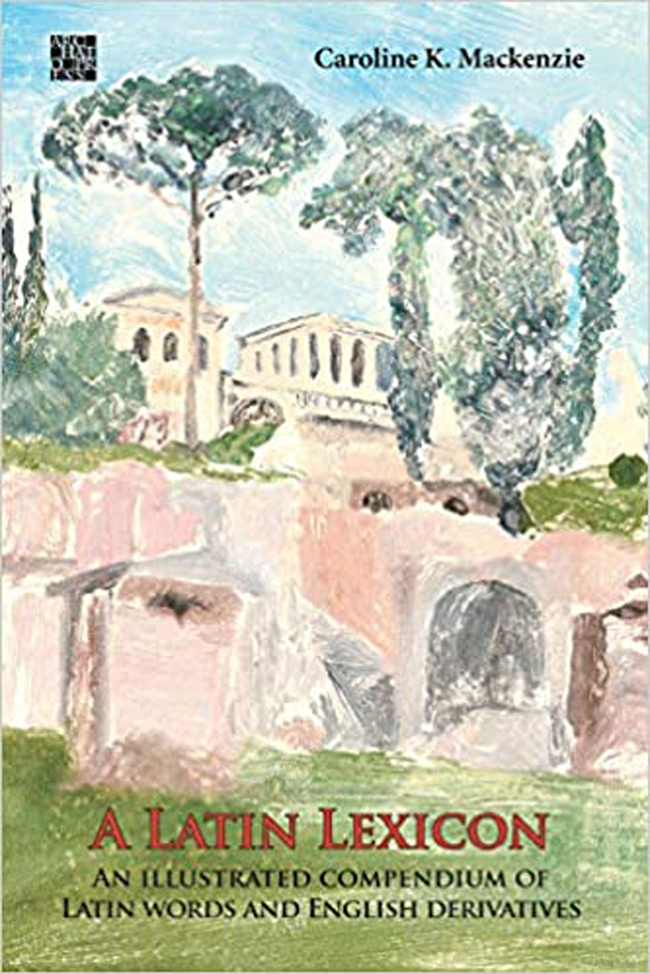
This volume is a useful companion and reference guide for any student taking the OCR GCSE in Latin. It begins with a concise introduction explaining the function of the book and the methodology behind the selection of derivatives, as well as giving key grammatical terminology relevant to unpacking the GCSE wordlist. It would be a very useful classroom reference guide for students to consult when completing vocabulary acquisition activities.
The central part of the book lays out in alphabetical order roughly 360 words of the GCSE vocabulary required for the OCR specification. This is done in a clear and simple layout, with a maximum of four words on a page. Each word is accompanied by a note as to what part of speech it is; nouns are accompanied by declension and gender, and verbs by their conjugation. The English meaning is then given, followed by a selection of English derivatives. However, for an illustrated compendium, there are relatively few illustrations, sometimes with upwards of ten pages between illustrations of the words, though each page is decorated with columns and leaves. The layout is organised so that the words are centralised on the page, leaving quite a lot of blank space to the left and right, which could have been used more beneficially for images to aid the visual learner.
This book could be used fruitfully in the classroom as a basis for vocabulary acquisition activities such as derivatives bingo or other similar games. The author notes that there are many ‘themes’ to the derivatives, such as nature, sport and medicine (p xi), and the thematic collection of derivatives may be a fun extension or revision activity for students. As the author gives a maximum of six derivations per Latin word, there is scope to use this book as a starting point for the collection of further derivatives, thus creating opportunities for students to further explore the connections between English and Latin. As more of a reference tool, the teacher has the freedom to use it creatively as a basis for vocabulary activities. Overall, this beautifully presented book encourages the student to think about how Latin is very much still present in the language that we use today, and will also aid students in the acquisition of new English words.


